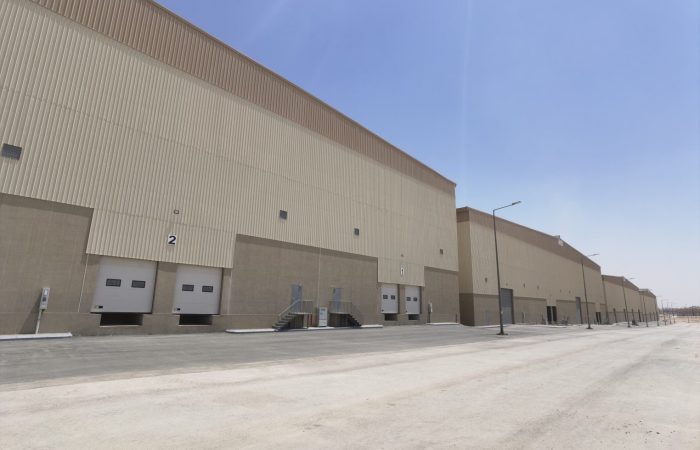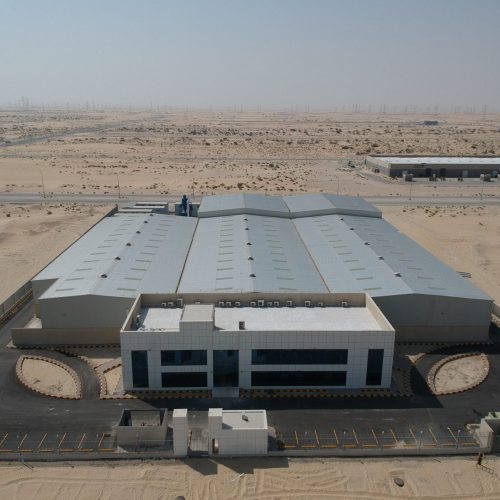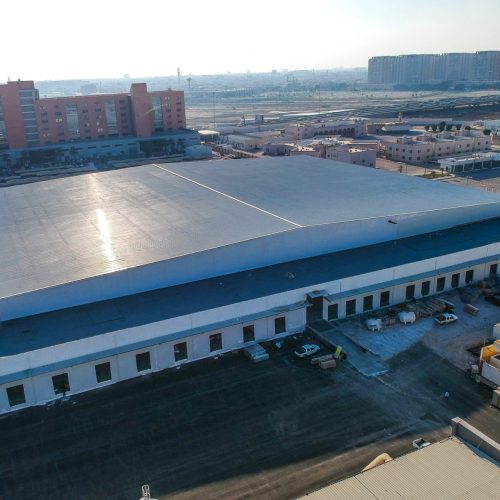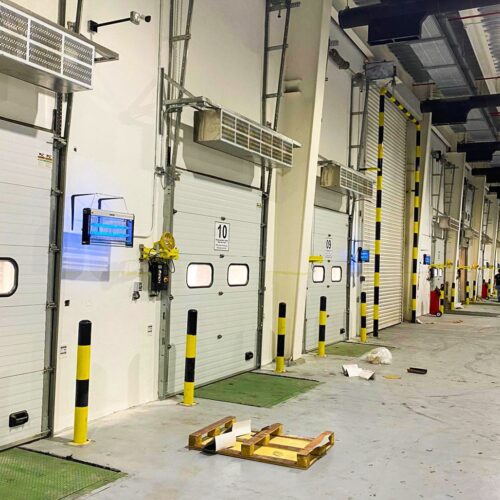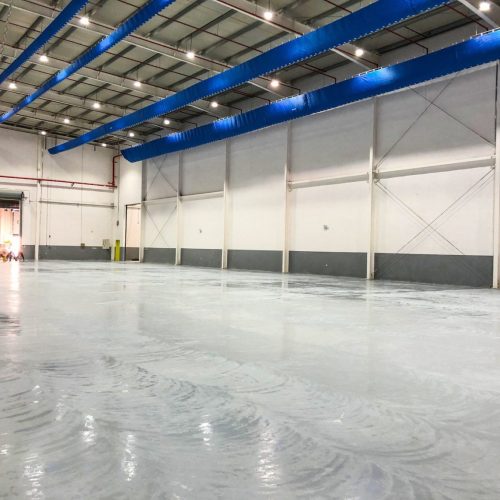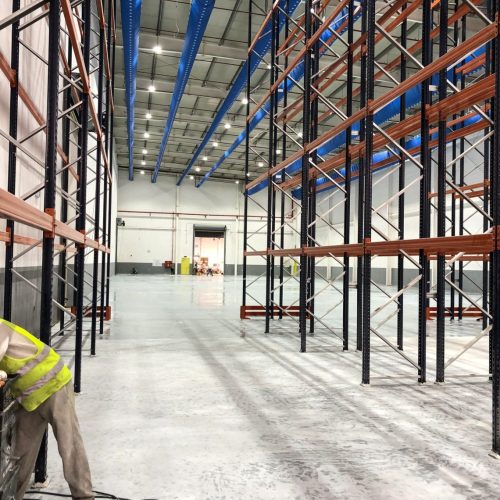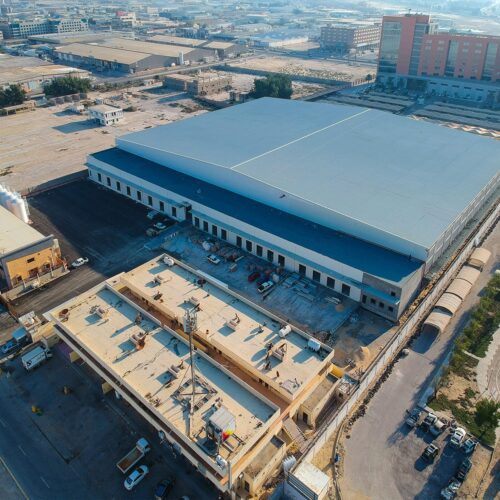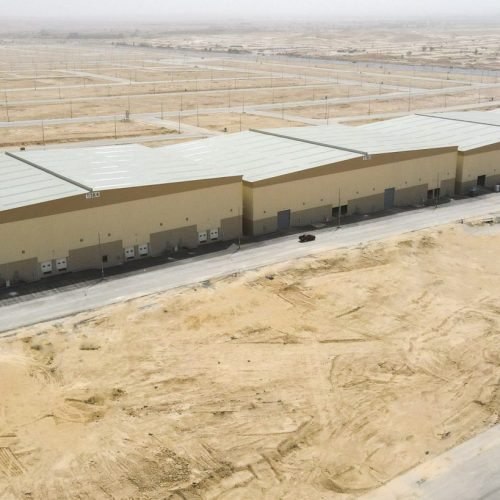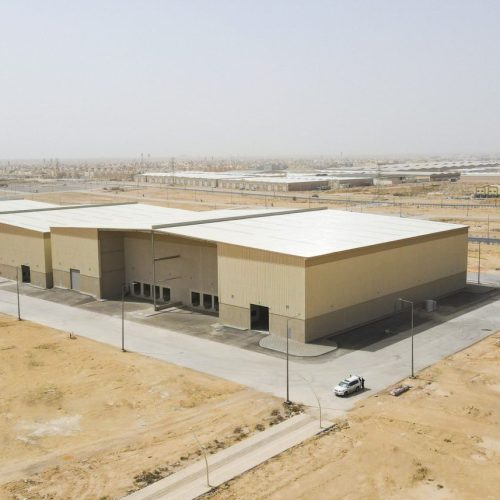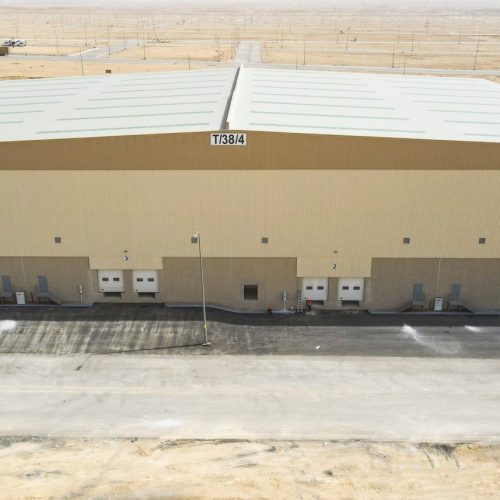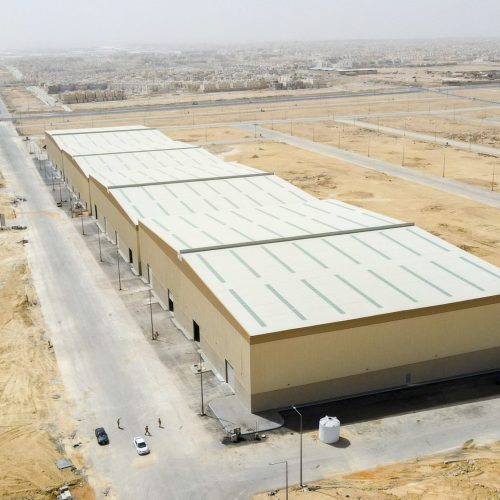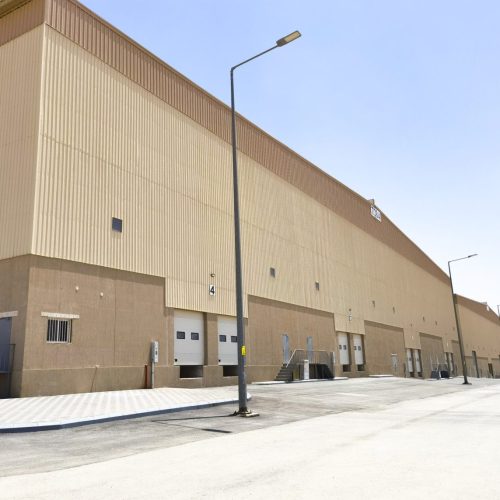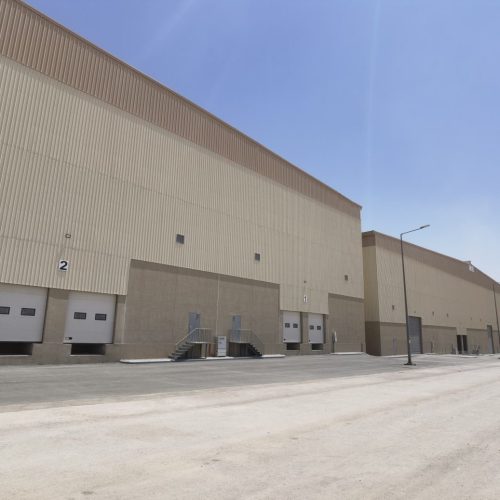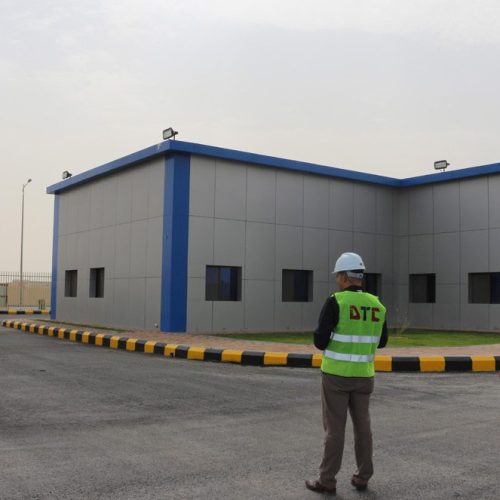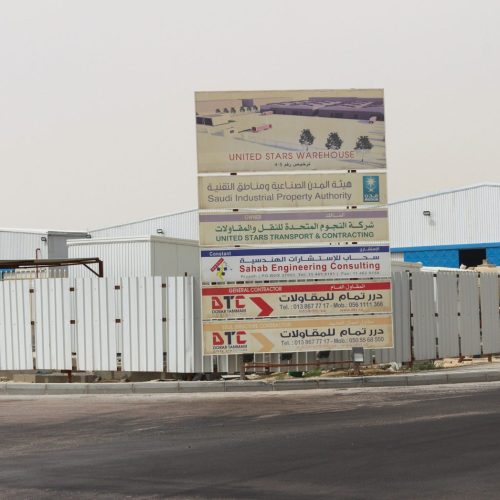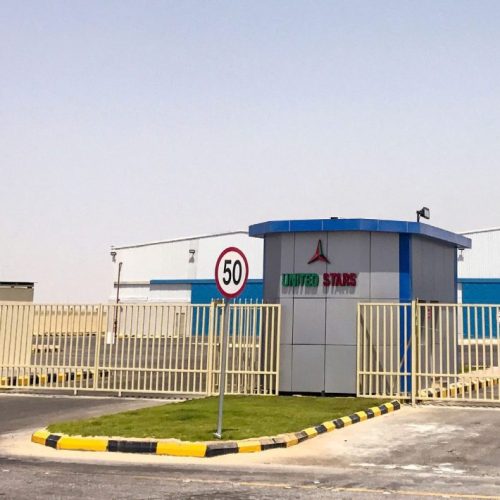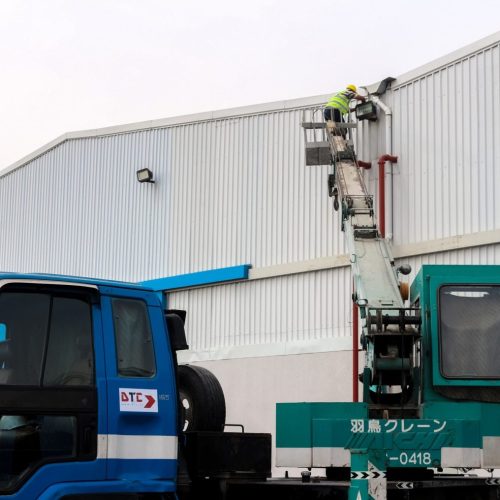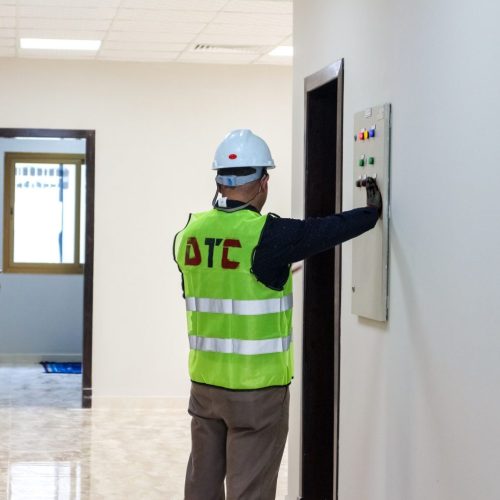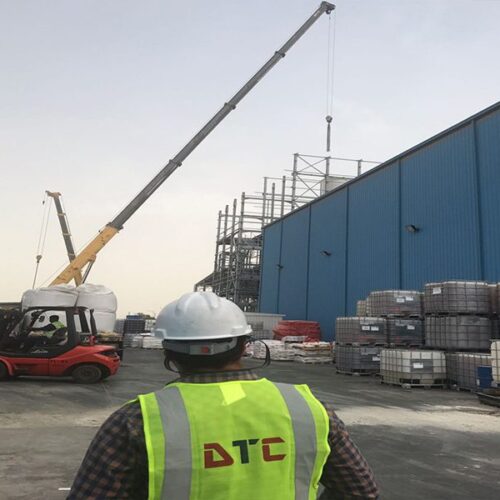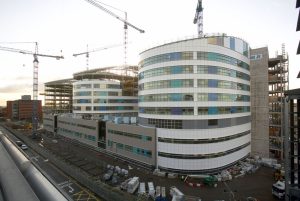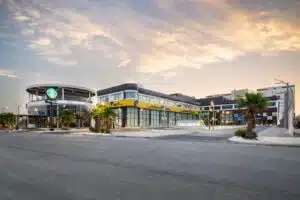DTC Contracting Company – Leading the Way in Warehouse Construction in Saudi Arabia
In the fast-paced world of logistics and supply chain management, having a well-constructed warehouse is paramount. DTC Contracting Company stands out as a premier warehouse construction company in Saudi Arabia, offering a comprehensive range of services tailored to meet the diverse needs of businesses across the Kingdom. From designing state-of-the-art distribution centers to building high-security pharmaceutical warehouses, DTC ensures that every project is executed with precision, efficiency, and a commitment to excellence.
Comprehensive Warehouse Construction Services
Types of Warehouses Built by DTC
DTC Contracting Company prides itself on its ability to construct various types of warehouses, each designed to cater to specific business needs:
Distribution Centers
Efficiently designed to handle large volumes of goods, our distribution centers streamline logistics operations, ensuring timely and accurate distribution of products.
Public and Private Warehouses
Whether you need a public warehouse accessible to multiple clients or a private warehouse customized for a single business, DTC provides flexible solutions that enhance storage and management capabilities.
Climate-Controlled and Cold Storage Facilities
For businesses dealing with temperature-sensitive products, our climate-controlled warehouses and cold storage facilities maintain optimal conditions to preserve product quality and safety.
High-Security Pharmaceutical Distribution Centers
Specializing in high-security installations, DTC builds pharmaceutical warehouses that ensure the safety and integrity of critical medical supplies, complying with stringent regulatory standards.
Custom Design and Build Solutions
At DTC, we understand that every business has unique requirements. Our custom warehouse design services ensure that each warehouse is tailored to meet the specific operational needs of our clients. By leveraging the latest building techniques like tilt-up and precast concrete panel systems, we construct buildings that are both cost-effective and high in quality.
- Tailored Designs: We collaborate closely with clients to develop warehouse layouts that optimize space utilization and enhance workflow efficiency.
- Advanced Construction Techniques: Utilizing tilt-up and precast concrete panel systems allows us to deliver durable and aesthetically pleasing warehouses quickly and efficiently.
- Sustainable Practices: Incorporating eco-friendly materials and energy-efficient systems, we promote sustainability in every project, aligning with global environmental standards.
Expertise and Experience
Proven Track Record
DTC Contracting Company boasts a robust portfolio of successful projects across Saudi Arabia, including:
- Cold Storage Facilities: Designed to maintain precise temperature control for perishable goods.
- Intermodal Routing Centers: Facilitating seamless transfer of goods between different transportation modes.
- Distribution Centers: Enhancing logistical efficiency and product distribution.
- Tilt-Up Structures: Providing durable and cost-effective construction solutions.
- Pre-Engineered Warehouses: Offering customizable and scalable storage solutions.
- Refrigerated Distribution Centers: Ensuring the integrity of temperature-sensitive products.
Our extensive experience allows us to handle complex projects with ease, ensuring that each warehouse we build meets the highest standards of quality and functionality.
Skilled Workforce
Our team comprises highly trained engineers, architects, designers, welders, and other skilled professionals dedicated to delivering top-notch construction services. Continuous training and professional development ensure that our workforce remains adept at using the latest technologies and adhering to industry best practices.
Focus on Details for Optimal Performance
Clear Stack Height
Proper stack height design is crucial for efficient storage and easy access. DTC ensures that the stack heights are optimized to facilitate smooth storage and retrieval processes, enhancing overall warehouse productivity.
Optimal Warehouse Area
We meticulously calculate the total square footage based on inventory needs, ensuring that warehouses are neither too large to waste space nor too small to accommodate inventory. This precise space utilization maximizes storage capacity and operational efficiency.
Dock Doors
Understanding the importance of logistics, DTC installs dock doors tailored to the inbound and outbound needs of clients. Whether it’s sliding doors for easy access or specialized configurations, we ensure that dock areas facilitate smooth loading and unloading processes.
Electrical Requirements
Warehouses often operate heavy machinery that requires robust electrical systems. DTC ensures that electrical installations are designed to meet high-voltage needs, supporting the seamless operation of equipment and machinery within the warehouse.
Truck Yard Design
Our truck yard designs are customized to meet the specific logistic needs of clients, ensuring that transportation and storage operations are integrated seamlessly. Efficient truck yard layouts enhance the flow of goods and reduce turnaround times.
Specialized Flooring
For businesses dealing with heavy machinery and equipment, specialized flooring solutions like Fibmix are essential. DTC implements flooring systems that can sustain heavy loads, ensuring durability and longevity in high-demand environments.
Safety Installations
Safety is a top priority in warehouse construction. DTC installs comprehensive safety systems, including fire sprinklers, emergency exit doors, and other safety equipment tailored to the nature of each client’s business, ensuring a safe working environment.
Competency and Comprehensive Services
Pre-Construction Services
Our pre-construction services lay the foundation for successful projects:
- Design Sharing: Collaborating with clients to finalize design details before construction begins.
- Detailed Budgeting & Estimating: Providing accurate cost estimates to help clients plan their budgets effectively.
- Consulting and LEED Management: Assisting clients in achieving LEED certification and implementing sustainable practices.
- Maintenance Services: Offering ongoing support to ensure the long-term functionality and safety of warehouses.
- Safety Planning: Developing comprehensive safety protocols tailored to each project.
- Subcontractor Procurement: Selecting and managing subcontractors to maintain high standards of construction quality and efficiency.
Post-Construction Services
After the warehouse is built, DTC continues to support clients through:
- Final Inspections and Quality Checks: Ensuring that all aspects meet the highest standards and are ready for operation.
- Maintenance and Support: Providing guidance on building upkeep and any necessary services to keep the facility in top condition.
- Ongoing Partnerships: Building long-term relationships with clients through reliable after-sales support and continuous engagement.
Benefits of Choosing DTC Contracting Company – warehouse construction
Customized Solutions
At DTC, we understand that every business has unique needs. Our customized solutions ensure that each warehouse is designed and built to meet specific operational requirements, enhancing efficiency and productivity.
Cost-Effective Construction
By utilizing the latest construction techniques like tilt-up and precast concrete panel systems, we construct warehouses that are cost-effective without compromising on quality. This approach helps clients achieve their construction goals within budget constraints.
Quality Assurance
Our commitment to quality is unwavering. DTC employs rigorous quality control measures throughout the construction process, ensuring that every warehouse we build meets the highest standards of excellence.
Enhanced Supply Chain Management
Effective warehouse design is integral to efficient supply chain management. DTC assists clients in designing warehouses that facilitate the effective and efficient management of products, ensuring a smooth flow of the supply chain.
Case Studies and Success Stories
Cold Storage Facility Project
Client Needs: A leading food distribution company required a state-of-the-art cold storage facility to maintain the freshness and quality of perishable goods.
DTC’s Solution: We designed and built a climate-controlled warehouse with precise temperature management systems and robust insulation.
Outcome: The facility enhanced product preservation, reduced spoilage rates, and improved overall operational efficiency for the client.
High-Security Pharmaceutical warehouse construction
Client Requirements: Ensuring the safety and integrity of pharmaceutical products was paramount for a major healthcare provider.
DTC’s Approach: We implemented advanced security features, including restricted access systems and robust structural designs, to create a secure environment.
Results: The warehouse met all regulatory standards, providing a safe and reliable storage solution that safeguarded critical medical supplies.
Commitment to Sustainability and Innovation
Sustainable Building Practices
DTC is committed to promoting sustainability in every project. We incorporate eco-friendly materials and implement waste reduction practices to minimize environmental impact.
- Eco-Friendly Materials: Using materials that are environmentally responsible and have a low carbon footprint.
- Energy Efficiency: Implementing energy-saving systems and renewable energy sources to reduce operational costs and promote sustainability.
Technological Advancements
Staying at the forefront of technology, DTC leverages modern construction techniques to enhance efficiency and quality.
- Building Information Modeling (BIM): Utilizing BIM for enhanced planning, coordination, and accuracy in construction projects.
- Smart Technologies: Integrating IoT devices and automated systems to optimize warehouse operations and management.
Customer-Centric Approach
Understanding Client Needs
We believe in personalized service. By understanding the unique requirements of each client, we tailor our construction processes to align with their business goals.
- Tailored Solutions: Customizing designs and construction methods to meet specific operational needs.
- Collaborative Planning: Working closely with clients throughout the project to ensure their vision is realized accurately.
Transparent Communication and Reporting
Open and transparent communication is key to successful project execution. DTC ensures that clients are kept informed at every stage of the construction process.
- Regular Updates: Providing timely progress reports and updates to keep clients informed about project status.
- Accessible Support: Offering easy access to project managers and support teams to address any queries or concerns promptly.
After-Sales Support and Maintenance
Our relationship with clients extends beyond project completion. DTC offers ongoing maintenance services to ensure the long-term functionality and safety of the warehouses
- Ongoing Support: Providing maintenance services to ensure the longevity and optimal performance of the warehouses.
- Long-Term Partnerships: Building trust through reliable after-sales services and continuous client engagement.
Conclusion
Choosing the right warehouse construction company in Saudi Arabia is essential for creating efficient, durable, and safe storage solutions that meet your business needs. DTC Contracting Company excels in this field by offering comprehensive construction services, leveraging advanced technologies, and maintaining a steadfast commitment to quality and sustainability. Our expertise in designing and building a wide range of warehouses—from distribution centers to high-security pharmaceutical facilities—ensures that your warehouse not only meets but exceeds your expectations.
Ready to Get Started? Contact Us Today!
Let DTC Contracting Company bring your warehouse vision to life with our unparalleled construction services.
- Phone: +966 13 867 7717
- Email: info@dtc.sa
Visit our website at www.dtc.sa to learn more about our services and view our project portfolio.
By choosing DTC, you’re not just building a warehouse—you’re investing in a robust, sustainable, and efficient future for your business. Let’s build something great together!

